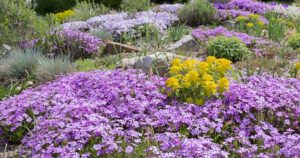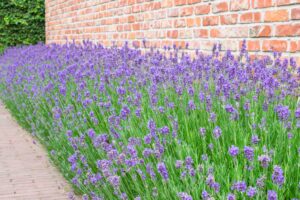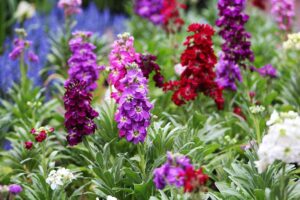Introduction
Flowers are a beautiful addition to any garden, but they can also be a valuable resource for composting. Composting is the process of breaking down organic matter into a nutrient-rich soil amendment. When you compost flowers, you are not only recycling their nutrients back into the soil, but you are also helping to create a healthier environment for your plants.
This guide will provide you with everything you need to know about composting with flowers, from choosing the right flowers to adding them to your compost pile. We will also discuss the benefits of composting flowers and how to avoid common problems.

So whether you are a seasoned composter or you are just getting started, read on for all the information you need to know about composting with flowers!
Composting with Flowers: A Complete Guide
Composting with Flowers: A Complete Guide
What is Composting?
Composting is the process of breaking down organic matter into a nutrient-rich soil amendment. It is a natural process that occurs when microorganisms, such as bacteria and fungi, break down organic matter in the presence of oxygen. Composting can be done at home or on a commercial scale.
Why Compost Flowers?
There are many reasons to compost flowers. Composting flowers can help to:
- Improve soil quality: Composting flowers can help to improve the soil structure and fertility, making it easier for plants to grow.
- Reduce waste: Composting flowers can help to reduce the amount of waste that goes to landfills.
- Attract pollinators: Composting flowers can attract pollinators, such as bees and butterflies, which help to pollinate plants.
- Save money: Composting flowers can save you money on fertilizer and other soil amendments.
How to Compost Flowers
Composting flowers is a simple process that anyone can do. Here are the steps involved:
- Collect your flowers. You can compost any type of flower, including fresh flowers, dried flowers, and flower petals.
- Shred or chop your flowers. This will help to speed up the composting process.
- Add your flowers to a compost pile or bin. You can also compost flowers in a compost tumbler or a worm composting bin.
- Cover your compost pile or bin with a tarp or sheet to help keep it moist.
- Turn your compost pile or bin every few weeks to help aerate the compost and speed up the composting process.
- Once your compost is finished, you can use it to improve the soil in your garden or yard.
Tips for Composting Flowers
Here are a few tips for composting flowers:
- Use a variety of flowers in your compost pile. This will help to create a balanced compost that is rich in nutrients.
- Add other organic matter to your compost pile, such as leaves, grass clippings, and kitchen scraps. This will help to speed up the composting process and add nutrients to the compost.
- Keep your compost pile moist, but not wet. A moist compost pile will help to create the ideal conditions for the microorganisms that break down organic matter.
- Turn your compost pile regularly to help aerate the compost and speed up the composting process.
- Once your compost is finished, you can use it to improve the soil in your garden or yard.
Conclusion
Composting flowers is a simple and effective way to improve the soil quality in your garden or yard. It is a great way to reduce waste, attract pollinators, and save money.
The Benefits of Composting with Flowers
The Benefits of Composting with Flowers
Composting with flowers is a great way to recycle your garden waste and improve the quality of your soil. Flowers are a good source of nitrogen, potassium, and phosphorus, all of which are essential nutrients for plant growth. Composting with flowers also helps to break down organic matter, which helps to improve the drainage and aeration of your soil.
Here are some of the benefits of composting with flowers:
- Improved soil quality: Composting with flowers helps to improve the quality of your soil by adding nutrients and organic matter. This can help your plants to grow healthier and stronger.
- Increased plant growth: Composting with flowers can help to increase the growth of your plants. This is because the nutrients and organic matter in the compost help to feed the plants and improve their root development.
- Better drainage and aeration: Composting with flowers can help to improve the drainage and aeration of your soil. This is because the organic matter in the compost helps to break down clay particles and create air pockets in the soil. This makes it easier for water to drain through the soil and for roots to breathe.
- Reduced pests and diseases: Composting with flowers can help to reduce the incidence of pests and diseases in your garden. This is because the compost helps to improve the overall health of your plants, making them less susceptible to attack.
- Attract beneficial insects: Composting with flowers can attract beneficial insects to your garden. These insects, such as bees and ladybugs, help to pollinate your plants and control pests.
If you’re looking for a way to recycle your garden waste and improve the quality of your soil, composting with flowers is a great option. It’s easy to do, and it offers a number of benefits for your garden.
Here are some tips for composting with flowers:
- Choose flowers that are high in nitrogen, such as roses, dahlias, and marigolds.
- Chop the flowers into small pieces before adding them to the compost pile.
- Add a layer of compostable materials, such as leaves or grass clippings, to the pile after each addition of flowers.
- Turn the compost pile regularly to help the materials break down.
- The compost pile should be moist but not wet.
- The compost pile should be warm, but not hot.
- The compost pile should be well-ventilated.
- The compost pile should be located in a sunny spot.
- The compost pile should be protected from wind and rain.
Composting with flowers is a great way to recycle your garden waste and improve the quality of your soil. It’s easy to do, and it offers a number of benefits for your garden.
How to Compost with Flowers
How to Compost with Flowers
Flowers are a beautiful addition to any garden, but they can also be a great way to compost. Composting is the process of breaking down organic matter into a nutrient-rich soil amendment. When you compost flowers, you’re not only helping to reduce waste, but you’re also creating a valuable resource for your garden.
Here are a few tips for composting with flowers:
- Choose the right flowers. Not all flowers are suitable for composting. Flowers that are diseased or infested with pests should not be composted. Stick to flowers that are free of disease and pests.
- Roughly chop the flowers. This will help to speed up the composting process.
- Add a variety of other materials to the compost pile. This will help to create a balanced compost that is rich in nutrients. Some good additions to your compost pile include grass clippings, leaves, kitchen scraps, and manure.
- Turn the compost pile regularly. This will help to aerate the compost and speed up the decomposition process.
- Be patient. Composting takes time. It can take anywhere from a few months to a year for the compost to fully decompose.
If you’re patient, composting with flowers can be a great way to improve the health of your garden and reduce your waste.
Table of Contents
- What is Composting?
- How to Compost with Flowers
- Tips for Composting with Flowers
- FAQs about Composting with Flowers
What is Composting?
Composting is the process of breaking down organic matter into a nutrient-rich soil amendment. Composting is a natural process that has been going on for centuries. In nature, organic matter decomposes when it is exposed to air, water, and microorganisms. Composting speeds up this process by providing the right conditions for decomposition to occur.
When you compost, you are not only recycling organic matter, but you are also creating a valuable resource for your garden. Compost can be used to improve soil structure, increase water retention, and provide nutrients to plants.
How to Compost with Flowers
Composting with flowers is easy. Here are a few steps to get you started:
- Gather your materials. You will need flowers, a compost pile or bin, and a few other materials.
- Prepare your compost pile. If you are using a compost bin, make sure it is clean and free of debris. If you are building a compost pile, find a spot in your yard that is sunny and well-drained.
- Add your materials to the compost pile. Layer the flowers with other organic materials, such as grass clippings, leaves, and kitchen scraps.
- Turn the compost pile regularly. This will help to aerate the compost and speed up the decomposition process.
- Be patient. Composting takes time. It can take anywhere from a few months to a year for the compost to fully decompose.
Tips for Composting with Flowers
Here are a few tips for composting with flowers:
- Choose the right flowers. Not all flowers are suitable for composting. Stick to flowers that are free of disease and pests.
- Roughly chop the flowers. This will help to speed up the composting process.
- Add a variety of other materials to the compost pile. This will help to create a balanced compost that is rich in nutrients.
- Turn the compost pile regularly. This will help to aerate the compost and speed up the decomposition process.
- Be patient. Composting takes time. It can take anywhere from a few months to a year for the compost to fully decompose.
FAQs about Composting with Flowers
Q: What is the best way to compost flowers?
A: There are a few different ways to compost flowers. You can compost them in a compost bin, in a compost pile, or in your garden.
Q: How long does it take to compost flowers?
A: It can take anywhere from a few months to a year for flowers to fully decompose. The composting process will be faster if you add a variety of other materials to the compost pile, such as grass clippings, leaves, and kitchen scraps.
Q: What can I do with composted flowers?
A: Composted flowers can be used to improve soil structure, increase water retention, and provide nutrients to plants. You can also use composted flowers to make your own potting soil.
Q: What are the benefits of composting flowers?
A:
What Flowers Are Best for Composting
What Flowers Are Best for Composting
When it comes to composting with flowers, there are a few things to keep in mind. First, not all flowers are created equal. Some flowers are better for composting than others. Second, the type of flower you compost will affect the overall quality of your compost.
Flowers that are best for composting
The following flowers are some of the best choices for composting:
- Roses
- Daffodils
- Tulips
- Lilies
- Sunflowers
- Dahlias
- Chrysanthemums
- Petunias
- Marigolds
These flowers are all high in nitrogen, which is essential for the composting process. They are also relatively easy to compost, and they will produce a high-quality compost that is rich in nutrients.
How to compost flowers
To compost flowers, simply follow these steps:
- Collect your flowers.
- Remove any leaves, stems, or other plant material that is not compostable.
- Chop the flowers into small pieces.
- Add the flowers to your compost pile.
- Cover the flowers with a layer of soil or compost.
- Water the compost pile regularly.
Your flowers will compost in about 6-8 weeks. Once they are finished composting, you can use the compost to improve the soil in your garden.
Tips for composting flowers
Here are a few tips for composting flowers:
- Add a variety of flowers to your compost pile. This will help to ensure that the compost is balanced and nutrient-rich.
- Don’t add too many flowers at once. Composting too much flower material at once can cause the pile to become too wet and anaerobic.
- Water your compost pile regularly. This will help to keep the pile moist and ensure that the composting process is happening properly.
- Turn your compost pile regularly. This will help to aerate the pile and speed up the composting process.
By following these tips, you can compost your flowers and create a high-quality compost that is rich in nutrients.
Troubleshooting Composting with Flowers
Troubleshooting Composting with Flowers
Composting with flowers can be a great way to recycle your garden waste and create a nutrient-rich soil amendment for your plants. However, there are a few common problems that can occur when composting flowers, such as:
- Not enough moisture. If your compost pile is too dry, it will not decompose properly. To avoid this problem, make sure to add water to your compost pile regularly, especially during hot weather.
- Too much nitrogen. Flowers contain a lot of nitrogen, which can be beneficial for your compost pile. However, if you add too much nitrogen, it can cause the compost to become anaerobic and smelly. To avoid this problem, only add a small amount of flowers to your compost pile at a time.
- Not enough oxygen. Compost needs oxygen to decompose properly. If your compost pile is too compact, it will not be able to get enough oxygen and the decomposition process will slow down. To avoid this problem, turn your compost pile regularly to aerate it.
- Insect infestation. Compost piles can attract insects, such as flies and maggots. To avoid this problem, make sure to keep your compost pile covered and to turn it regularly.
If you are experiencing any of these problems with your compost pile, there are a few things you can do to troubleshoot the issue.
- Add water to your compost pile if it is too dry. You can do this by spraying the pile with a hose or by adding a bucket of water.
- Remove any excess nitrogen from your compost pile. You can do this by removing any green or nitrogen-rich materials from the pile.
- Aerate your compost pile to improve oxygen levels. You can do this by turning the pile regularly with a pitchfork or shovel.
- Cover your compost pile to keep out insects. You can do this by using a tarp, old sheet, or even a large garbage bag.
By following these tips, you can troubleshoot any problems you are having with your compost pile and ensure that it is decomposing properly.
Table of Common Composting Problems and Solutions
| Problem | Solution |
|---|---|
| Not enough moisture | Add water to the compost pile regularly. |
| Too much nitrogen | Remove any excess nitrogen-rich materials from the pile. |
| Not enough oxygen | Turn the compost pile regularly to aerate it. |
| Insect infestation | Cover the compost pile to keep out insects. |
Composting with flowers is a great way to recycle your garden waste and create a nutrient-rich soil amendment for your plants. Here are a few tips to help you get started:
- Choose the right flowers for composting. Not all flowers are created equal when it comes to composting. Some flowers, such as roses and geraniums, contain a lot of oils and resins that can make the compost smell bad. Other flowers, such as marigolds and calendula, are more suitable for composting because they break down quickly and don’t produce a strong odor.
- Roughly chop the flowers before composting. This will help the flowers break down more quickly.
- Add a layer of soil or compost to the bottom of your compost bin. This will help to absorb any excess moisture from the flowers.
- Add the flowers to the compost bin in layers, alternating with layers of soil or compost. This will help to create a balanced compost pile.
- Turn the compost pile regularly to help the flowers break down more quickly. You should turn the compost pile at least once a week, but more often if the weather is warm.
- Water the compost pile regularly to keep it moist, but not wet. A compost pile that is too wet will become anaerobic and start to smell bad.
- Be patient! Composting takes time. It can take several months for the flowers to break down completely. However, the end result is a nutrient-rich soil amendment that will help your plants grow strong and healthy.
Table of Contents
- What is Composting?
- How to Compost Flowers
- Tips for Composting with Flowers
- Benefits of Composting
- Troubleshooting Composting Problems
Resources
The Composting Council: A non-profit organization dedicated to promoting composting and educating the public about its benefits.
- The National Gardening Association: A non-profit organization dedicated to advancing gardening and horticulture in the United States.
Key Takeaways
Outro
Composting with flowers is a great way to recycle your garden waste and create a nutrient-rich soil amendment for your plants.
So why not give it a try? You might be surprised at how easy it is to do and how much your plants will appreciate it.It’s also a fun and easy way to get kids involved in gardening..
Here are some additional resources to help you get started:
- The Composting Council
- The National Gardening Association
- The University of California Cooperative Extension
Happy composting!
- Cat Palm vs Majesty Palm: Which Should You Choose? - June 30, 2024
- Flowers That Survive Winter: Discover the Exceptional No. 5 - June 30, 2024
- The Ultimate Guide to the Growth and Care of the Black Pagoda Lipstick Plant - June 29, 2024




